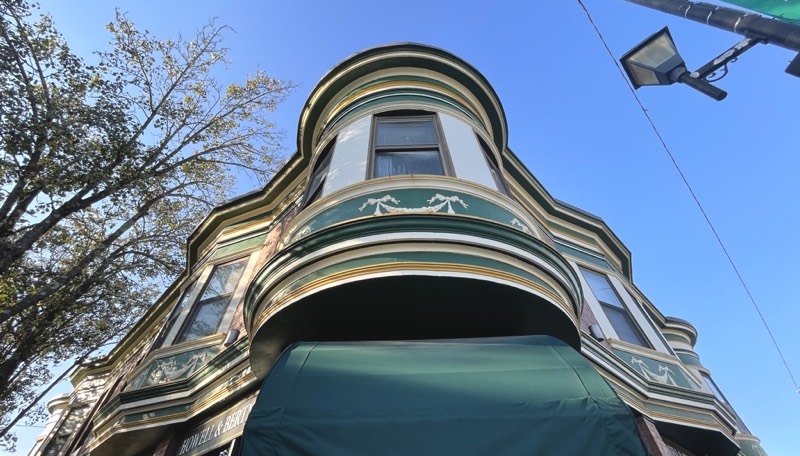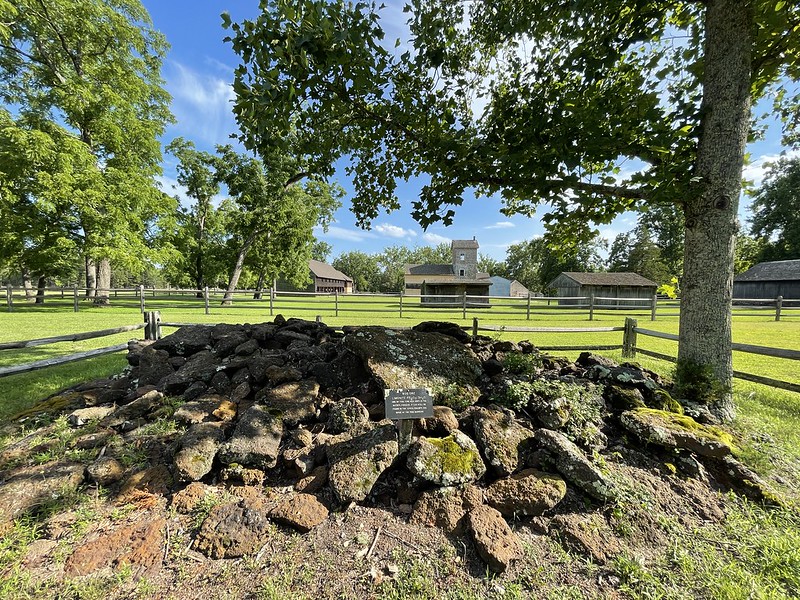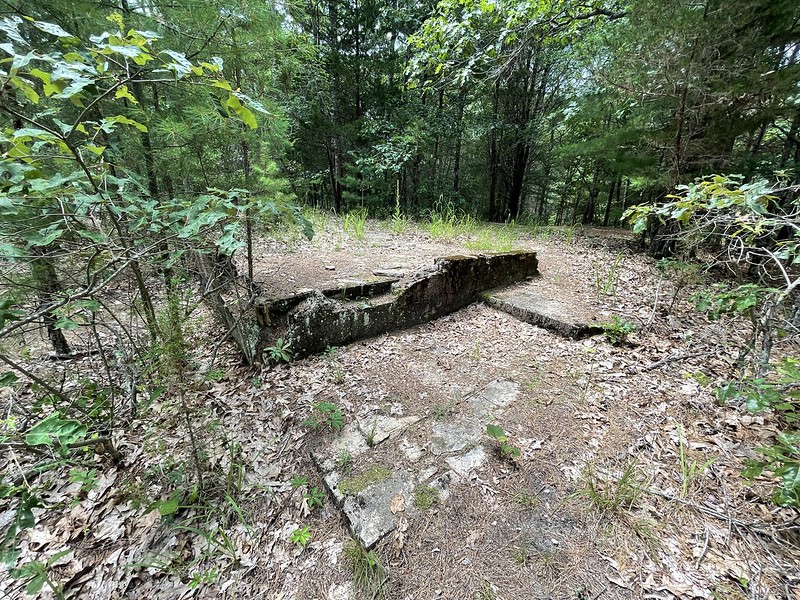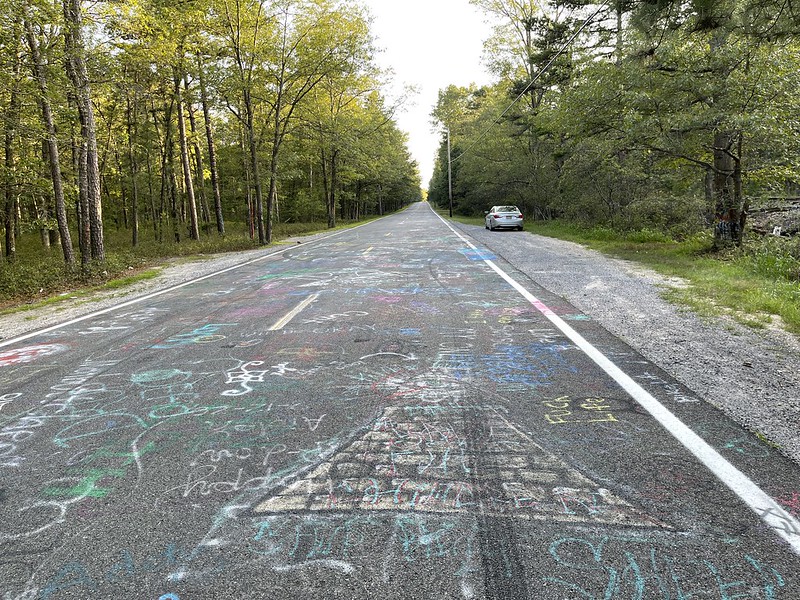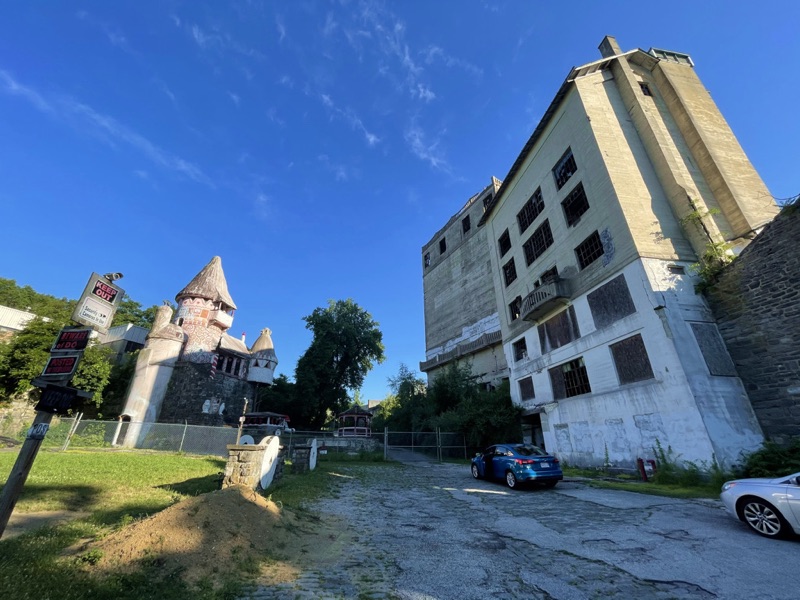Back in July, I was hanging out in the parking lot of the Brenda T Byrne State Park welcome center, waiting for the sun to set so I could get some video of Northern Dusk-Singing cicadas singing. These cicadas, as their name suggests, sing after the sun has set. I located a male cicada perched in a tree close to the ground and was poised to film it singing when I noticed the silhouette of a man appear in the distance manifesting like a ghost out of the haze of twilight. He walked directly toward me. Was he a ghost? Was he a serial killer? Turns out the guy was a trucker who liked to hike and stopped by to get some information about the park. We talked for a while and he gave me some tips about other local parks and trails like the Franklin Parker Preserve. The trucker was intrigued by the abandoned train tracks that ran through much of the Pine Barrens as well. I missed getting a video of the cicada singing, but I got some good tips on new trails, and later I snagged a cicada nymph which I was later able to watch molt.
Chatsworth Lake, across the road from the entrance to The Franklin Parker Preserve:

The Franklin Parker Preserve, maintained by the New Jersey Conservation Foundation, is located in Chatsworth, New Jersey, not far from Hot Diggity Dog and the Brooksbrae Terracotta Brick Factory. Ecologically speaking, it is prime Pine Barrens: sandy soil, with obvious dunes in some places, multitudinous pine trees, blueberry bushes, oaks, and a black-water river. The hiking trails are scenic: winding through forests, over dunes, alongside and over swamps, and the West Branch Wading River. The park is recommended for everything from horseback riding, to fishing, to bird-watching — as a naturalist, and someone who enjoys finding abandoned stuff in the woods, it’s a most excellent place to explore. The cicadas you’ll find in the park are the Pine Barrens cicada (June-early July), the Northern Dusk-Singing cicada (July-August), and the Dog-Day cicada (late July-September).
The quiet, cola-black waters of the West Branch Wading River:

The abandoned railroad:

I’m sure a lot of folks will ignore the railroad that bisects the park, but like the Trucker, I was intrigued. The main hiking trail crosses the railroad — just a step or two and you’re over it. But, if you follow the tracks northeast, you’ll discover a decaying train bridge made of timber, that crosses the West Branch of Wading River. If you go southwest your path will be blocked by a pine forest. The railroad is the New Jersey Southern Railroad. If you start at Franklin Parker on Google Maps satellite view, you can trace the path of the railroad north to Raritan Bay, and south to Vineland, bisecting the Pine Barrens. You can catch glimpses of it alongside the Brooksbrae Terracotta Brick Factory and in Atsion near the abandoned furnace. Over the years the Pine Barrens has been home to many industries including bog iron harvesting, iron forging, charcoal manufacture, lumber, brick making, glass making, paper mills, ice harvesting, and farming cranberries and blueberries. Trains were needed to transport these goods north to New York and west to Philadelphia (the New Jersey Southern Railroad connecting to the Camden & Atlantic and/or Atlantic City lines). With little manufacturing in the area, starting in the mid-20th century, there’s been little need for a railroad. The forest has reclaimed the land, but the ghost of the railroad remains.
More from the Pine Barrens:

